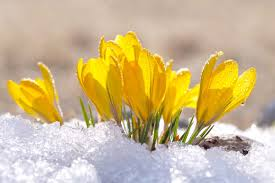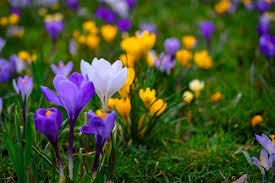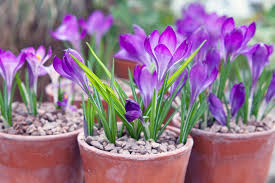Crocuses are a delightful sight to behold when they emerge from the ground, signaling the end of winter and the arrival of spring. But knowing the right time to plant crocus bulbs, or corms, is crucial for ensuring a beautiful bloom. Whether you’re planting snow crocus (Crocus chrysanthus), Dutch crocus (Crocus vernus), or saffron crocus (Crocus sativus), timing and climate will determine your success.
Understanding Crocus Varieties
There are two main types of crocus in the spring: vernal crocuses (snow and Dutch varieties) and autumnal crocuses (saffron crocus). Their planting times vary, primarily based on your region’s USDA Hardiness Zone.
When to Plant Snow and Dutch Crocus Varieties
Snow and Dutch crocuses are hardy in USDA Zones 3 to 8 and bloom in spring. However, planting times differ across zones because of regional temperature differences. For gardeners in colder zones like Alaska (Zone 4) or parts of the Midwest and Northeast (Zones 3 to 6), crocus bulbs should be planted in late September to October, well before the first frost. For those in milder climates (Zones 7 and 8), the ideal planting time is usually November.
The key is to plant your bulbs six to eight weeks before the first expected hard frost, when temperatures consistently drop below 28°F. To determine this, check the average frost date for your area and calculate accordingly. For accurate soil temperature readings, use a soil thermometer, as crocuses thrive when the soil temperature is 60°F or lower.

Using a Soil Thermometer
To use a soil thermometer, insert the probe 3-4 inches deep into the soil early in the morning, when the soil is at its coldest. If the reading is above 60°F, check again the next day until it reaches the desired temperature. Once it does, it’s time to plant your corms. Cold temperatures prepare them for the upcoming winter, ensuring they bloom beautifully in spring.
Planting Crocus Together for a Stunning Display
Crocuses are best planted in groups of three to nine corms, creating clumps of vibrant blooms. Choose a sunny or partially shady location and dig a trench 3 inches deep (for Zones 6-8) or 4 inches deep (for Zones 3-5) for added insulation. Place the corms flat-side down, spaced about 2 inches apart, with the pointy end facing upward. After covering them with soil, water them well, and wait for the first signs of spring!

When to Plant Saffron Crocus (Crocus sativus)
For those eager to enjoy the brilliant colors of crocus earlier, saffron crocus is your answer. Unlike snow and Dutch crocuses, saffron crocus blooms in the fall and requires warmer soil temperatures. If you live in USDA Zones 6-10, plant saffron crocus bulbs in late summer, ideally in August for cooler regions or September for warmer areas. These bulbs don’t need chilling, so you don’t have to worry about soil temperature as much.
Saffron crocus typically blooms in just two months, offering a burst of color before the cold sets in. For gardeners in colder zones (Zones 5 and below), saffron crocus can be grown in pots. Plant the bulbs outdoors in early August and bring them indoors before the first frost to enjoy their blooms indoors. Ensure they receive plenty of sunlight or use grow lights for optimal growth.
Saffron crocuses are also prized for their spice—harvest the red stigmas and dry them to use in cooking, adding a unique flavor to dishes like saffron-infused cookies.
Final Thoughts
Crocus bulbs are a wonderful addition to any garden, providing early blooms and a touch of spring or fall cheer. Plant them at the right time, and they’ll reward you with vibrant colors year after year. Whether you’re planting snow and Dutch crocus for spring or saffron crocus for a fall display, follow these tips to ensure your crocus bulbs flourish. The result? A garden filled with stunning blooms that will lift your spirits when you need them most.
